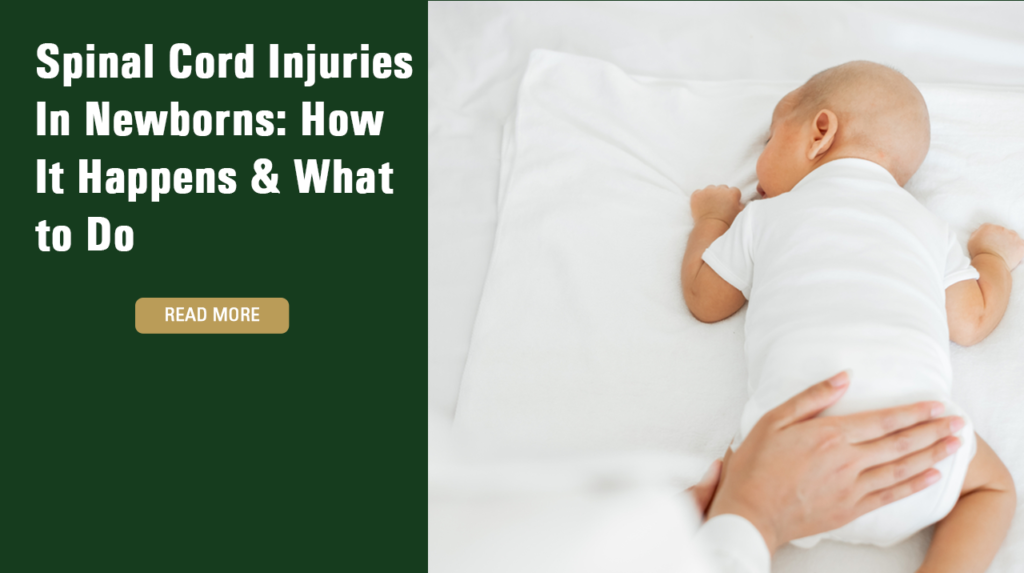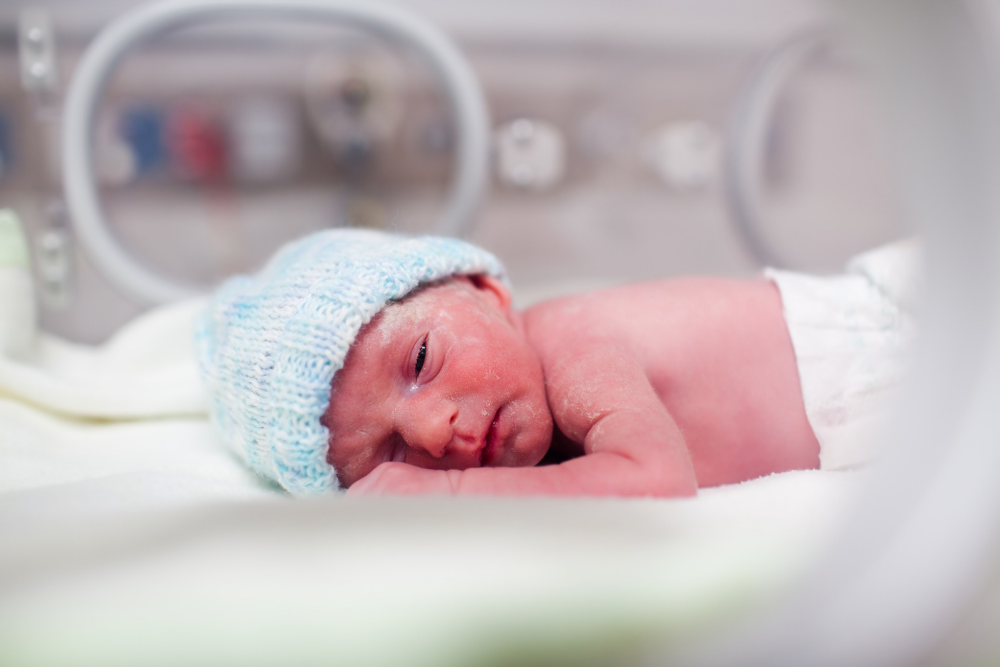Spinal Cord Injuries In Newborns: How It Happens & What to Do

While rare, some newborns can suffer spinal cord injuries during or shortly after birth. If your infant suffered a spinal cord injury at birth, he or she might suffer lifelong disabilities and permanent paralysis, depending on the injury’s severity and location. Many children who suffer spinal cord injuries will face a lifetime of being confined to wheelchairs and require ongoing treatment and care. Boston Children’s Hospital reports that between 60% and 75% of infants with spinal cord injuries suffer them in the neck or cervical spine area, 20% suffer them in the thoracic or chest area, and between 5% and 20% suffer them in the lower back or lumbar region. The damage tends to be more extensive when the spinal injury is located further up on the spine. Some infants with spinal cord injuries will be permanently paralyzed below the location of the injury. Others might suffer from intellectual disabilities, and some infants with spinal cord injuries will die.
Spinal cord injuries can be complete or incomplete. Complete injuries result in a total loss of function below the injury site. For example, an infant with a complete cervical spine injury will be paralyzed from the neck down and never regain the ability to move his or her limbs or to sense things below the injury site. Incomplete injuries might allow the brain to still send signals to other parts of the body, meaning that an infant might regain motor function and sensation with treatment and therapy. If you have learned that your infant suffered a spinal injury at birth, you should speak to a birth injury attorney at Raynes & Lawn.
How Do Spinal Cord Injuries Happen To Newborns?
Newborn spinal cord injuries can occur during or shortly after birth and happen when the infant’s spine suffers blunt force birth trauma. This type of trauma normally occurs because of a medical error. The injury can vary in severity, ranging from bruises to tears. Other medical mistakes that can result in spinal cord injuries include a doctor’s failure to diagnose spina bifida. In infants with this condition, some of the spinal nerves are exposed and not completely enclosed by the vertebrae. When the labor and delivery staff members are unaware that an infant has spina bifida, they can cause damage by contacting the exposed nerves.

Complicated deliveries are also a cause of infant spinal cord damage. If a doctor improperly uses forceps to reposition a baby, the infant’s neck can be overstressed, causing a cervical spinal cord injury. Traction placed on the baby’s trunk, abnormal positioning, and other trauma can also result in spinal cord injuries. If a doctor fails to perform a C-section when a baby is positioned poorly or has spina bifida, spinal cord injuries might also result.
Common Spinal Cord Injuries To Newborns
The spinal cord is classified into four sections according to the different locations along the vertebral column. The cervical spine is the uppermost part and is located in the neck region. The thoracic spine is located in the middle to the upper-back area and is protected by the thoracic vertebrae. The portion of the spine that is in the lower back is called the lumbar spine. Finally, the base of the spine is called the sacrum.
Spinal cord injuries that happen in upper regions typically result in more debilitating injuries. Spinal cord damage can range from bruises to complete spinal cord tears that result in permanent paralysis. It is important to distinguish between spinal cord injuries that are caused by birth trauma and those that are caused by birth defects. Spinal cord injuries happen during labor and delivery. Birth defects develop during pregnancy before a baby is born. Doctors aren’t responsible for congenital defects, so if your infant’s spinal cord issues were caused by a congenital defect, you will not have grounds to file a lawsuit against your doctor because of the defect. However, if the doctor failed to diagnose spina bifida and then caused further injury by applying pressure to the exposed nerves, you might have grounds to file a claim.
Complete spinal cord injuries are more severe and occur when the baby’s spinal cord is completely severed or torn. This type of injury results in the complete loss of sensation and motor function below the damaged area. Infants with complete injuries might die. If they survive, they will typically face lifelong paralysis below the injury site.
An incomplete spinal cord injury might include a partial tear of the spinal cord. In this type of injury, it is still possible for the brain to send signals down the spinal cord and out to other areas of the body. In some cases, babies with incomplete injuries can fully recover.
Spinal cord bruises can happen when pressure is applied to the spine. The bruise can result in inflammation and swelling that can apply pressure to the spinal cord and can result in paralysis. Doctors must quickly identify spinal cord contusions and take steps to reduce the inflammation to prevent further damage from occurring.
What To Do About Spinal Cord Injuries From Birth
If you have learned that your infant suffered spinal cord injuries at birth, you should follow all of your doctor’s treatment recommendations. Immediate medical attention and follow-up care might help your baby to regain some function and potentially recover from the injury.
You should also consult an experienced birth injury attorney about your infant’s medical condition. In most cases, spinal cord injuries at birth that are unrelated to congenital defects are caused by medical negligence. Your lawyer can review the medical records with the help of an expert to determine whether the doctor’s care fell below the expected standard of care and amounted to medical negligence. If your attorney determines that the doctor was negligent and caused your baby’s spinal cord injuries, you can file a claim against all of those who were responsible. To learn more about your rights, contact Raynes & Lawn today for a free case evaluation at 1-800-535-1797.

For the general public: This Blog/Website is made available by the law firm publisher, Raynes & Lawn, for educational purposes. It provides general information and a general understanding of the law but does not provide specific legal advice. By using this site, commenting on posts, or sending inquiries through the site or contact email, you confirm that there is no attorney-client relationship between you and the Blog/Website publisher. The Blog/Website should not be used as a substitute for competent legal advice from a licensed attorney in your jurisdiction.
For attorneys: This Blog/Website is informational in nature and is not a substitute for legal research or a consultation on specific matters pertaining to your clients. Due to the dynamic nature of legal doctrines, what might be accurate one day may be inaccurate the next. As such, the contents of this blog must not be relied upon as a basis for arguments to a court or for your advice to clients without, again, further research or a consultation with our professionals.
